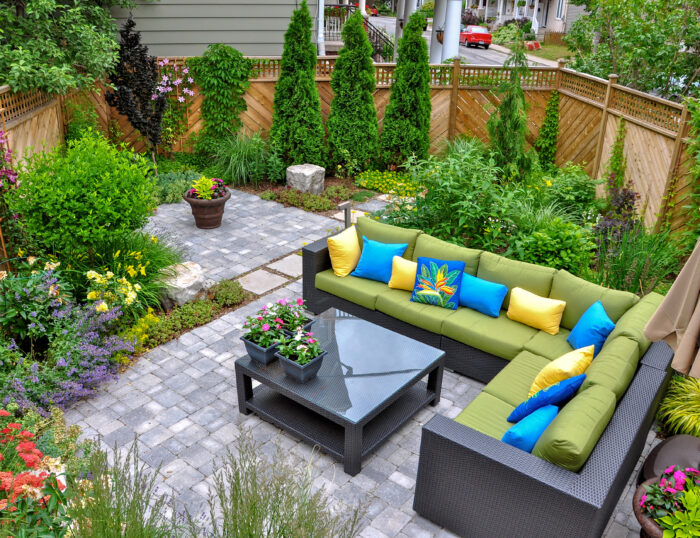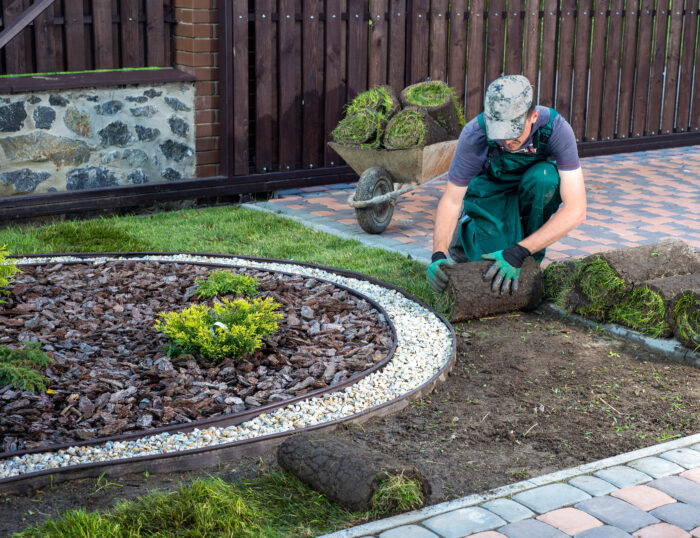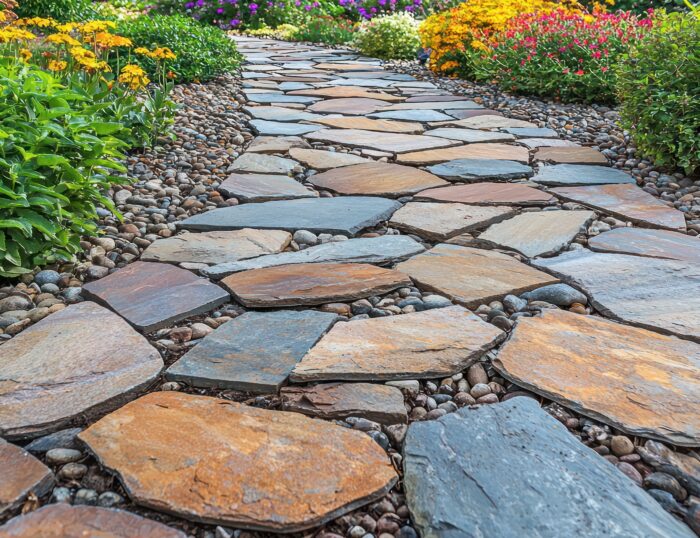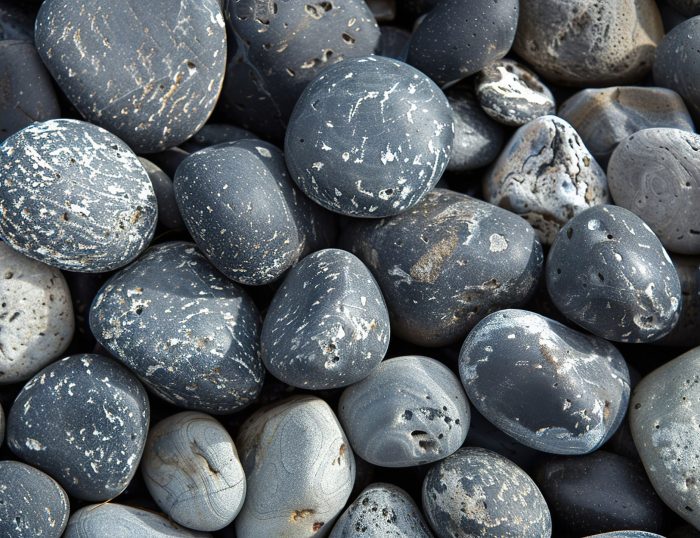
Location
The pathways to a garden are vital. They allow you to make changes and care for the garden as necessary, thereby reducing the risk of issues that could impact your health and property value.
When arranging decorative pebbles in the garden, consider the layout ahead of time, taking into account the width of the garden, the types of stones being used, your home’s design, pathway routes, and other factors. One tip to consider is maintaining paths that have gentle curves. Doing so can curve the wind without taking away from a straightforward route.
The pebbles should never impact anyone’s safety and security when coming to and from the garden. All arrangements must be accessible for one’s feet and eyes. It’s a good idea to design a border with the pebbles, which provides appeal and safely framed walkways.
Sizing
You should always spread pebbles evenly, ensuring they sit correctly. Laying the large pebbles first is key, as this can stave off soil prevention and help plants maintain a secure environment. The objective should include adding dimension and depth, which is why smaller pebbles shouldn’t be laid first.
Another detail to remember is that smaller stones are more pleasant to walk on. The amount of foot traffic you expect to see in the area should be a key factor in determining the arrangement. For example, if you live in a warm climate like Albuquerque, Mexican beach pebble will provide a comfortable foundation for bare feet all year long. Smaller pebbles can interlock better, offering more stability than larger stones. Using smaller rocks on top could reduce the risk of accidents and injuries when maintaining the garden.
Maintenance
Although pebbles don’t require mowing and watering like flowers, grass, and other plants, maintenance is still necessary. They can allow you to maintain a beautiful garden without excessive hassle or issues such as soil erosion.
Creating base layers, removing weeds, and installing landscaping fabrics can improve the surface’s stability. Mix colors for visual interest, but always spread them evenly. Laying them smoothly can allow you to remove debris by raking the pebbles regularly and occasionally rinsing them.
Another tip is to use mulch glue when binding the pebbles together. It provides a secure surface and prevents the rocks from spreading, which is especially helpful in places that get a lot of ice and snow in the winter, such as Milwaukee. Mexican beach pebble that’s bound together with adhesive is much more likely to resist scattering due to the expansion of freezing water between the rocks.
Pebble Selection
Choosing the best pebbles can ensure you have the proper ground cover, pathways, and other elements when arranging the stones within the garden. To select the most suitable options, consider the color, shape, and size as well as your intended usage.
No matter what type of landscaping project you’re planning, consider using decorative rocks, stones, or beach pebble to add depth, character, and beauty to it. When you’re ready to get started on your landscaping plan, reach out to the experts at RS&P Rock Stones & Pebbles, a premier provider of snow white beach pebbles, black polished pebbles, and a wide variety of decorative stones. To learn how we can help you create the landscape of your dreams, call us today.











